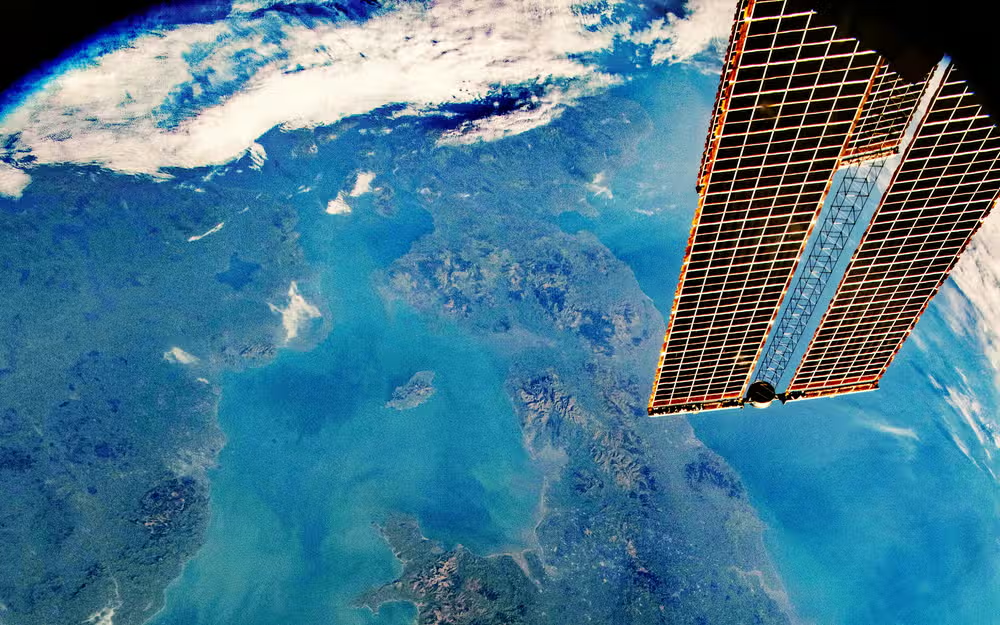NASA successfully launched the Europa Clipper spacecraft aboard a SpaceX Falcon Heavy rocket on Monday, marking the beginning of an exciting mission to explore Jupiter’s icy moon Europa.
The launch, originally set for October 10, had been delayed due to Hurricane Milton, but after a thorough evaluation, the spacecraft was cleared for liftoff from Kennedy Space Center in Florida at 12:06 p.m. ET.
Shortly after entering orbit, NASA confirmed communication with the spacecraft, a crucial step in beginning its journey.
The Europa Clipper is NASA’s first mission dedicated to studying an ice-covered ocean world, aiming to determine whether Europa could harbor life. Carrying nine scientific instruments, the Clipper will probe beneath Europa’s thick ice shell to investigate its subsurface ocean, which holds twice as much water as Earth’s oceans.
“This is the start of our journey of discovery,” said Jenny Kampmeier from NASA’s Jet Propulsion Laboratory. The mission promises to deepen our understanding of Europa and its potential to support life, which could redefine our view of habitability in the universe.

NASA’s Europa Clipper mission carries more than just scientific instruments—it also holds over 2.6 million names submitted by people worldwide, along with a poem by US Poet Laureate Ada Limón. This ambitious $5.2 billion mission, conceived in 2013, has faced its share of challenges.
Earlier this year, engineers discovered potential issues with the spacecraft’s ability to withstand Jupiter’s intense radiation. Fortunately, after completing critical testing in time, the team secured approval to move forward, avoiding a 13-month delay.
Curt Niebur, Europa Clipper program scientist, reflected on the effort, saying, “There was no harder year than this one to get Europa Clipper over the finish line. But we always knew it would be worth it.” The mission promises to explore Europa’s vast, ice-covered ocean, which may be habitable today—a unique opportunity to investigate a world covered entirely in liquid water.
This mission isn’t just a study of the distant past; it’s an exploration of a potential ocean world waiting for us at Europa.
After its launch, NASA’s Europa Clipper spacecraft will embark on a 1.8 billion-mile journey to Jupiter, expected to reach the gas giant in April 2030. Along the way, it will perform gravity-assist flybys of Mars and Earth to conserve fuel and accelerate its pace.
Europa Clipper will team up with the European Space Agency’s Juice (Jupiter Icy Moons Explorer), launched in April 2023, to study Jupiter and its largest moons. Juice will arrive in 2031, complementing Clipper’s exploration of Europa.
Measuring 100 feet (30.5 meters) across—larger than a basketball court—Europa Clipper is NASA’s largest spacecraft built for a planetary mission. Its expansive solar arrays will capture enough sunlight to power its instruments as it investigates Europa, which lies five times farther from the sun than Earth.

Instead of landing, the spacecraft will conduct 49 flybys of Europa, coming within 16 miles (25 kilometers) of the surface. To mitigate Jupiter’s intense radiation, Clipper will spend only short periods near the planet, using a titanium and aluminum vault to protect its sensitive electronics. Each flyby, spaced two to three weeks apart, will allow the spacecraft to recover from radiation exposure while mapping nearly the entire moon.
When the mission concludes, Europa Clipper may crash into Ganymede, Jupiter’s largest moon, though this decision is yet to be finalized.
While NASA’s Europa Clipper isn’t specifically designed to search for life, its mission is to assess whether the moon’s ocean beneath its icy shell could support life. Astronomers believe Europa may already have the essential ingredients for life: water, energy, and the right chemistry. Clipper will gather crucial data to determine if these elements exist in conditions that make the moon potentially habitable.
The mission will focus on the thickness of Europa’s ice shell, how it interacts with the ocean below, and the moon’s geological features. Scientists are particularly interested in the mysterious plumes observed rising through cracks in the ice, which vent particles into space. They want to know if surface materials mix with the ocean and what drives these plumes.
To conduct its investigation, Europa Clipper is equipped with powerful cameras and spectrometers to capture detailed images and maps of the moon’s surface and atmosphere. A thermal instrument will detect warm spots and plume activity, while a magnetometer will study Europa’s magnetic field, helping confirm the presence, depth, and salt content of its hidden ocean.
Discover more from Cine critique
Subscribe to get the latest posts sent to your email.

